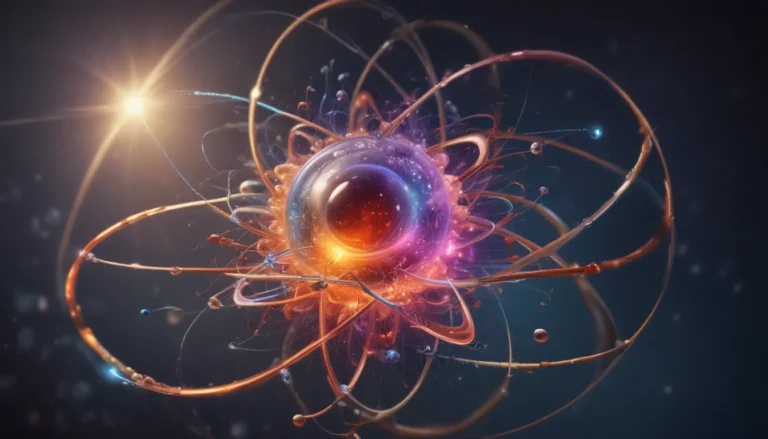A Note About Images: The images used in our articles are for illustration purposes only and may not exactly match the content. They are meant to engage readers, but the text should be relied upon for accurate information.
Welcome to the captivating world of inner transition metals, a group of elements that possess unique properties and play significant roles in various scientific and technological fields. As we embark on this journey of discovery, we will explore the intriguing qualities, applications, and importance of these enigmatic elements. From their electronic configurations to their abundance in the Earth’s crust, inner transition metals hold a wealth of information waiting to be unlocked. Join me as we delve into 16 fascinating facts about these mysterious elements, shedding light on their distinctive characteristics and the pivotal role they play in shaping our world.
Unveiling Inner Transition Metals
Definition and Importance
Inner transition metals refer to a distinctive group of elements located at the bottom of the periodic table, including the lanthanides and actinides. These elements exhibit fascinating properties and characteristics that make them essential in various industries such as electronics, healthcare, and energy production.
Electron Configuration
One of the most intriguing aspects of inner transition metals is their complex electronic structure. These elements have unique patterns in their electron configurations, with progressively filled 4f or 5f orbitals. This arrangement gives them distinct chemical and physical properties that set them apart from other elements.
Exploring the Enigmatic Qualities
Rare Earth Elements
The inner transition metal group includes rare earth elements known for their scarcity in nature. These elements are crucial in technological applications such as electronics, magnets, and catalysts, making them highly sought after for their exceptional properties.
Reactivity and Compounds
Despite their position in the periodic table, inner transition metals can exhibit high reactivity. They have a tendency to form complex compounds, particularly with organic ligands, due to the availability of their d and f orbitals. This reactivity adds to their versatility in various chemical reactions.
Magnetic Properties
Inner transition metals are renowned for their exceptional magnetic properties, with elements like neodymium and samarium being used in the creation of powerful magnets for industrial and research purposes. Their magnetic properties make them indispensable in a wide range of applications.
Radioactive Powerhouses: Actinides
The actinide series of inner transition metals is known for its radioactive nature. Elements such as uranium and plutonium are widely used in nuclear power generation and atomic research due to their unique properties as fissile materials. They play a critical role in the production of clean energy.
Luminescent Wonders: Lanthanides
The lanthanide series of elements exhibit exceptional luminescent properties, with compounds containing these elements being used in various applications like biomedical imaging and eco-friendly lighting solutions. Their luminescence adds a touch of brilliance to diverse fields of science and technology.
The Heaviest Elements
Inner transition metals boast some of the heaviest elements in the periodic table, with uranium being the heaviest naturally occurring element. With its high atomic number and unique properties, uranium is essential in the production of nuclear energy, showcasing the significance of these heavy elements.
Implications and Applications
Quantum Mechanics Connection
Inner transition metals provide a fascinating playground for quantum mechanics, with their unique electron configurations and intricate bonding behavior intriguing scientists. These elements contribute to our understanding of fundamental quantum principles, paving the way for advances in quantum computing and nanotechnology.
Industrial Importance and Applications
The inner transition metals play a vital role in various industries, ranging from electronics to energy, automotive, and healthcare. Their unique properties and diverse applications make them indispensable in modern technologies, driving innovation and progress in different sectors.
Environmental Concerns and Regulations
Inner transition metals, particularly rare earth elements, have raised environmental concerns due to their extraction and refining processes. To mitigate the environmental impact, stricter regulations and sustainable practices are being implemented to ensure responsible production and usage of these valuable elements.
Cutting-Edge Research and Development
Scientists and researchers continue to explore the unique properties of inner transition metals to develop novel materials and advance various scientific fields. Their potential applications in areas like quantum computing and nanotechnology hold immense promise for future advancements and innovations.
Conclusion
In conclusion, inner transition metals are a fascinating group of elements with unique properties and characteristics that play pivotal roles in shaping our world. From their complex electronic structures to their diverse applications in various industries, these elements offer a wealth of opportunities for exploration and discovery. By understanding the enigmatic nature of inner transition metals, scientists and researchers can unlock their full potential and harness their capabilities for the benefit of society and the advancement of science and technology.
FAQs
What are inner transition metals?
Inner transition metals are a group of elements located between the transition metals and the lanthanides or actinides in the periodic table, known for their unique properties and diverse applications.
How many inner transition metals are there?
There are 15 inner transition metals in total, including lanthanum, cerium, praseodymium, neodymium, promethium, samarium, europium, gadolinium, terbium, dysprosium, holmium, erbium, thulium, ytterbium, and lutetium.
What are some unique properties of inner transition metals?
Inner transition metals have high atomic numbers, high density, and complex electron configurations, contributing to their diverse chemical and physical properties that make them essential in various industries and applications.
What are the main uses of inner transition metals?
Inner transition metals are used in catalysis, electronics, lighting, magnetic devices, and other technological applications due to their unique properties and characteristics.
Are inner transition metals rare?
Yes, inner transition metals are relatively rare in nature, making them valuable and sought after for their exceptional properties and contributions to diverse fields of science and technology.
As we unravel the mysteries of inner transition metals, we invite you to delve deeper into the fascinating world of rare earth elements and expand your knowledge of these enigmatic elements. Join us on this journey of discovery, where every fact is a stepping stone towards a greater understanding of the wonders of chemistry and the marvels of the periodic table.






